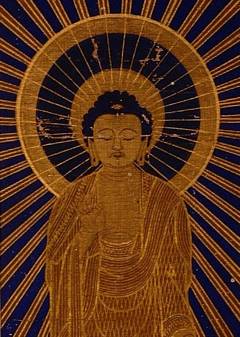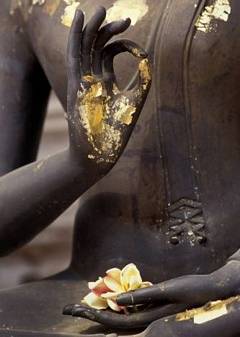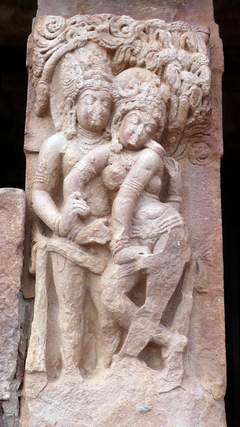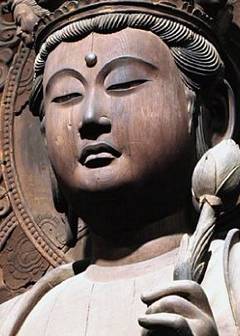 Love is the ultimate transgression, bell hooks argues. Its transformative power can shatter the status quo. In Zen Meditation, we develop states of great clarity but we also develop states of cow-like ignorance, bovine ponderousness. The important thing is not to have any resentment against your suffering, or any expectations of happiness. In fact, when some people encounter trouble, it does not reinforce their practice at all.
Love is the ultimate transgression, bell hooks argues. Its transformative power can shatter the status quo. In Zen Meditation, we develop states of great clarity but we also develop states of cow-like ignorance, bovine ponderousness. The important thing is not to have any resentment against your suffering, or any expectations of happiness. In fact, when some people encounter trouble, it does not reinforce their practice at all.
By grasping what is selfless as a self there is confusion. Since many of you have traveled far, or have worked hard to set aside the time, you have a great deal invested in this retreat. If you can take this attitude, eventually it will go away. The practice just keeps moving like a ball rolling down a hill. Freedom is shown in according one’s life with realities. The wisdom of the Buddha is not difficult to perceive; it can be attained in the instant between two thoughts. Musing requires excruciating motivation. The ones who come have some authentic desire for spiritual, moral, philosophical, or astute uplifting.
Being free to go wherever you wish, you are outside of the cycle of birth and death. If you do not abide in duality, neither having too much nor too little confidence, then what should you do? You have not come here to get enlightened, but to practice.
Zen Koan: “My Heart Burns Like Fire” Parable
Soyen Shaku, the first Zen teacher to come to America, said: “My heart burns like fire but my eyes are as cold as dead ashes.” He made the following rules which he practiced every day of his life.
In the morning before dressing, light incense and meditate.
Retire at a regular hour. Partake of food at regular intervals. Eat with moderation and never to the point of satisfaction.
Receive a guest with the same attitude you have when alone. When alone, maintain the same attitude you have in receiving guests.
Watch what you say, and whatever you say, practice it.
When an opportunity comes do not let it pass by, yet always think twice before acting.
Do not regret the past. Look to the future.
Have the fearless attitude of a hero and the loving heart of a child.
Upon retiring, sleep as if you had entered your last sleep. Upon awakening, leave your bed behind you instantly as if you had cast away a pair of old shoes.
Buddhist Insight on Wakeful Presence
According to Buddhism, everything mental and physical ensues in accordance with laws and conditions; and if it were otherwise, chaos and blind chance would reign. Nevertheless, such a thing is intolerable and disproves all laws of thinking. In the wakeful presence of the mind, other kinds of happiness diminish and are exhausted. Most people tend to be locked into a quite dreary round of tasks, and experience little peace or harmony, according to Zen philosophy. The American clinical psychologist John Welwood, who frequently writes about the integration of psychological and spiritual concepts, writes in Ordinary Magic, Everyday Life as Spiritual Path,
Our society would have us believe that inner satisfaction depends on our success and achievement. Yet struggling to “get somewhere” keeps us perpetually busy, stressed-out, and disconnected from that essential inner resource – our ability to be fully present – which could provide a real sense of joy and fulfillment. Our life is unsatisfactory only because we are not living it fully, because instead we are pursuing a happiness that is always somewhere else, other than where we are right now…
Cultivating the capacity to be fully present – awake, attentive, and responsive – in all the different circumstances of life is the essence of spiritual practice and realization. Those with the greatest spiritual realization are those who are “all here,” who relate to life with an expansive awareness that is not limited by any fixation on themselves or their own point of view. They don’t shrink from any aspect of themselves or life as a whole.


 The structure of the Lotus Mahal is built of brick and mortar with smooth and glossy plaster finishing. Yet, the platform or the basement of the building is built of stone. It has indented outlines with sharp corners, with excellently bedecked moldings at the bottom on all the sides. The structure has two stories.
The structure of the Lotus Mahal is built of brick and mortar with smooth and glossy plaster finishing. Yet, the platform or the basement of the building is built of stone. It has indented outlines with sharp corners, with excellently bedecked moldings at the bottom on all the sides. The structure has two stories.
 Meditation teaches us how to relate to life directly, so we can truly experience the present moment, free from conceptual overlay. Whenever you make distinctions, your mind is in opposition. If your mind is free from the environment, not
Meditation teaches us how to relate to life directly, so we can truly experience the present moment, free from conceptual overlay. Whenever you make distinctions, your mind is in opposition. If your mind is free from the environment, not  Rice colored with turmeric and shaped into a cone is a common sight during
Rice colored with turmeric and shaped into a cone is a common sight during  Freshly sliced cucumber and tomato
Freshly sliced cucumber and tomato Thought and emotion work together in receiving and processing information about the world and in
Thought and emotion work together in receiving and processing information about the world and in 
 It has a distinctive plan and does not give the mark of a temple at all in the first instance. In reality, it looks like a
It has a distinctive plan and does not give the mark of a temple at all in the first instance. In reality, it looks like a 
 Zen mind is one of those enigmatic phrases utilized by Zen edifiers to make you descry yourself, to transcend the words and wonder what your own mind and being are. This is the purport of all Zen edifying—to make you wonder and to answer that wondering with the
Zen mind is one of those enigmatic phrases utilized by Zen edifiers to make you descry yourself, to transcend the words and wonder what your own mind and being are. This is the purport of all Zen edifying—to make you wonder and to answer that wondering with the 
 1.25 cups
1.25 cups  Zen Meditation should just be a part of life. Zen people verbalize about viciousness for the reason that when you arouse, the maps that hold your notions are suddenly gone. Our intention in receiving the precepts is not just to bring awareness to behavior, as one might expect, but also to explore, as the thirteenth-century
Zen Meditation should just be a part of life. Zen people verbalize about viciousness for the reason that when you arouse, the maps that hold your notions are suddenly gone. Our intention in receiving the precepts is not just to bring awareness to behavior, as one might expect, but also to explore, as the thirteenth-century